What is Article 16 of the Northern Ireland protocol? How UK could legally override parts of post-Brexit treaty
and live on Freeview channel 276
The Foreign Secretary Liz Truss has unveiled plans to override sections of the Northern Ireland protocol.
Speaking in parliament on 17 May she said that the new agreement would make changes to the protocol, without scraping it, insisting it was entirely legal under international law.
Advertisement
Hide AdAdvertisement
Hide AdThe protocol, which was agreed by the UK and EU after Brexit, prevents a hard border on the island of Ireland and came into effect January 2021.
Its implementation has not proved popular amongst Unionists both in Northern Ireland and Britain, with the Democratic Unionist Party (DUP) citing it as their reason for refusing to form a government.
There have been calls for the government to trigger Article 16, which is a safeguarding measure that could suspend elements of the protocol.
However, instead of scrapping the treaty entirely, the UK has decided to override parts of the agreement with domestic laws.
Advertisement
Hide AdAdvertisement
Hide AdWhat is Article 16 and how could the UK legally override parts of the EU treaty?
What is Article 16?
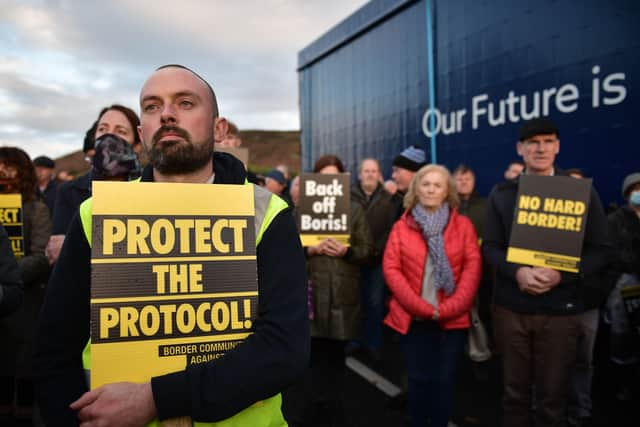

Article 16 of the Northern Ireland protocol is designed to offer “safeguarding” measures.
If either the UK or EU determine that the protocol is causing serious problems, Article 16 can effectively suspend parts of the protocol.
This can only happen if the protocol "leads to serious economic, societal or environmental difficulties that are liable to persist, or to diversion of trade".
Advertisement
Hide AdAdvertisement
Hide AdHowever, the protocol does not outline what counts as “serious economic, societal or environmental difficulties,” or a “diversion of trade.”
This has led to speculation around what would have to happen for Article 16 to be triggered.
In November 2021, Johnson said in a speech at the COP26 meeting, that he would: “rather find a negotiated solution to the problems created by the Northern Ireland Protocol."
He continued: “But if we do invoke Article 16 - which by the way is a perfectly legitimate part of that protocol – we will do so reasonably and appropriately, because we believe it is the only way left to protect the territorial integrity of our country, and meet our obligations to the people of Northern Ireland under the Belfast (Good Friday) Agreement.”
What is the Northern Ireland protocol?
Advertisement
Hide AdAdvertisement
Hide AdThe Northern Ireland protocol was implemented to prevent a hard border between Northern Ireland and Ireland after Brexit.
It was approved by the EU and UK government in 2019 and came into effect from January 2021.
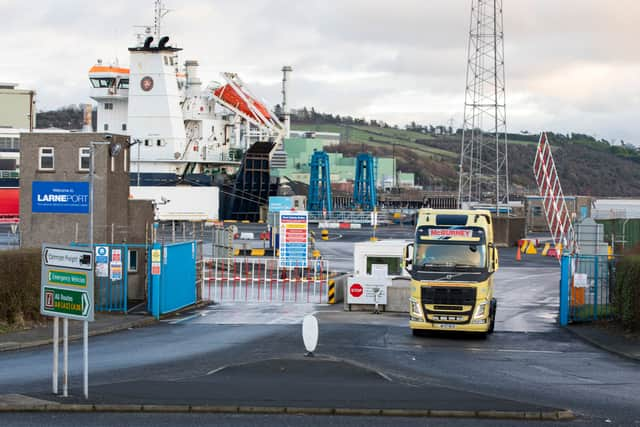

The protocol prevents checks on goods from being carried out between Ireland and Northern Ireland, by keeping NI within the European single market.
England, Scotland and Wales left the European single market after Brexit.
Advertisement
Hide AdAdvertisement
Hide AdThis means that certain goods coming from the UK to Northern Ireland will have to undergo additional checks and vice versa.
How do checks between Northern Ireland and Britain work?
Under the Northern Ireland protocol, the EU’s rules on customs and regulation of agriculture and food products apply to goods arriving in NI.
This means that goods such as meat and eggs need to be checked, which have led to delays in getting produce.
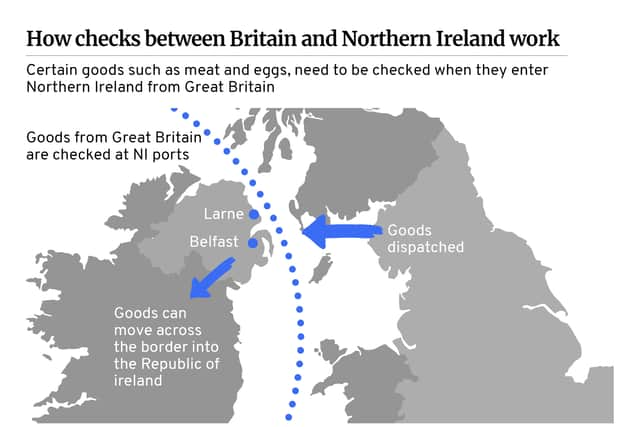

In December 2021, Northern Ireland’s Jewish community highlighted the impact these checks have had on accessing kosher food.
Advertisement
Hide AdAdvertisement
Hide AdSpeaking to the Belfast Telegraph Michael Black, chair of the Belfast Jewish Community said: “Due to the new barriers, our cupboards are nearly bare of kosher foods.
“If these shortages are not addressed soon, we will face real difficulty daily as well as in celebrating major events in our religious calendar such as the Jewish Passover in April.”
What happens if the UK triggers Article 16?
The process of triggering Article 16 is outlined in the protocol under annex seven.
First, if either side decides to trigger Article 16, they must let the other know, “without delay,” via the UK-EU Joint Committee.
Advertisement
Hide AdAdvertisement
Hide AdNeither side can implement safeguarding measures until one month has passed after they have disclosed they wish to trigger the article.
However, if there are, “exceptional circumstances requiring immediate action,” the process can speed up.
Why are Unionists unhappy with the Northern Ireland protocol?
There has been opposition to the protocol from Unionists in Northern Ireland and throughout the UK.
They are opposed to the protocol as they believe it creates an Irish Sea border and undermines NI’s place in the UK.
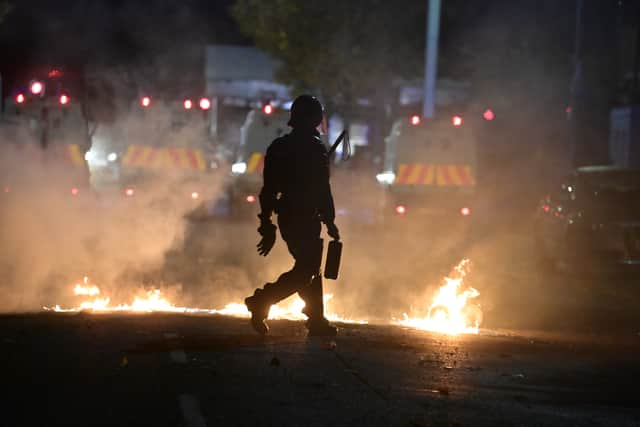

Advertisement
Hide AdAdvertisement
Hide AdThe DUP described the protocol as an “an existential threat” to the future of Northern Ireland in their party manifesto.
They are refusing to form an executive with the Northern Ireland government, citing the protocol as the reason.
But it’s not just Unionists in Northern Ireland, Andrew Bridgen, Conservative MP for Burton Upon Trent, is also a vocal critic saying on BBC Politics in April 2021: “It’s just clear the EU wants to annex Northern Ireland away from us, which is what they always wanted…
“Ultimately I think we’re being stitched up by the European Union and it’s had a very bad effect on the DUP - quite rightly.”
How could the UK legally override parts of the protocol?
Advertisement
Hide AdAdvertisement
Hide AdThe government is planning to publish laws to override sections of the protocol.
On 12 May, the Attorney General for England and Wales, Suella Braverman, is said to have legally approved this.
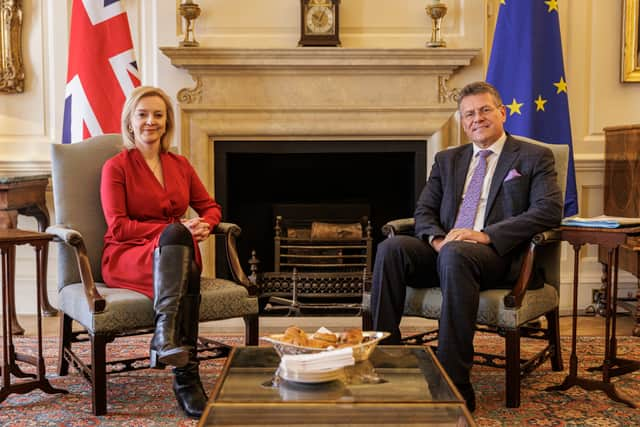

Truss, who shared the proposed changes in parliament on 17 May said: “I am announcing our intention to introduce legislation in the coming weeks to make changes in the protocol.”
She outlined that the proposed bill would: “remove regulatory barriers to goods made to UK standards being sold in Northern Ireland. “
Advertisement
Hide AdAdvertisement
Hide AdAdding that: “Businesses will be able to choose between meeting UK or EU standards in a new dual regulatory regime.”
However, there are growing concerns that the government will face legal action from the EU and may even trigger a trade war.
In a statement, EU chief negotiator, Maroš Šefčovič said: “Should the UK decide to move ahead with a bill disapplying constitutive elements of the protocol as announced today by the UK government, the EU will need to respond with all measures at its disposal.”
Comment Guidelines
National World encourages reader discussion on our stories. User feedback, insights and back-and-forth exchanges add a rich layer of context to reporting. Please review our Community Guidelines before commenting.
